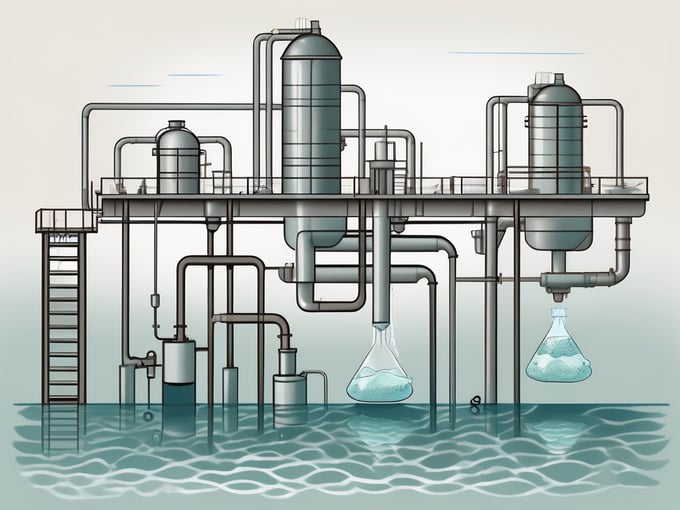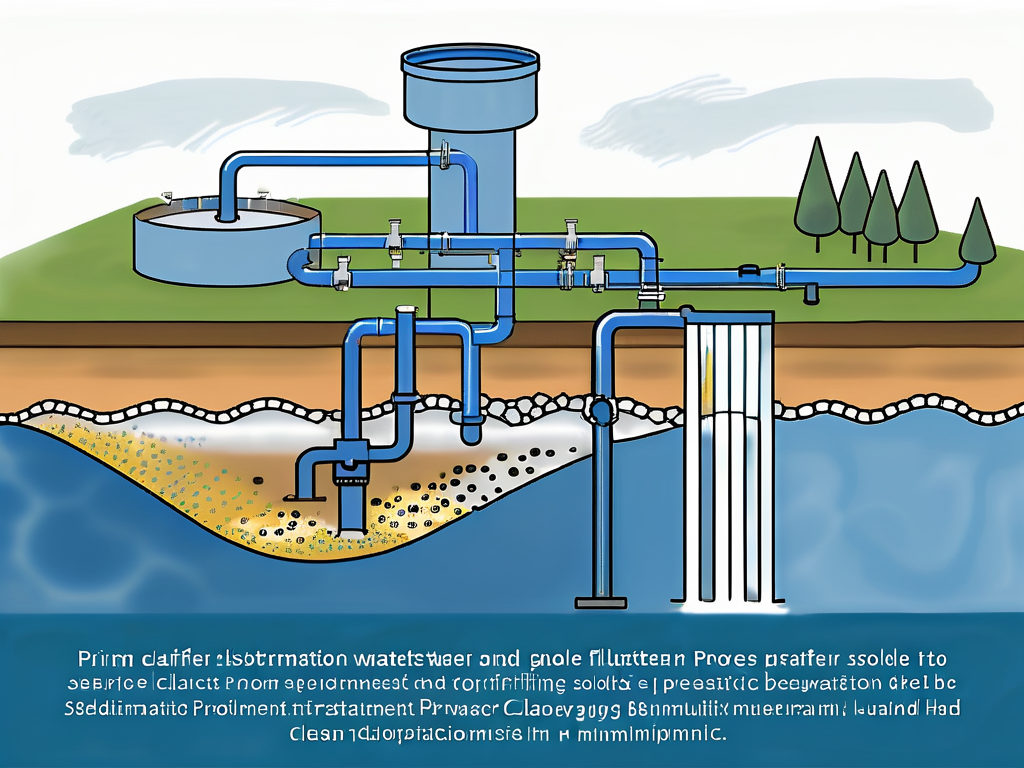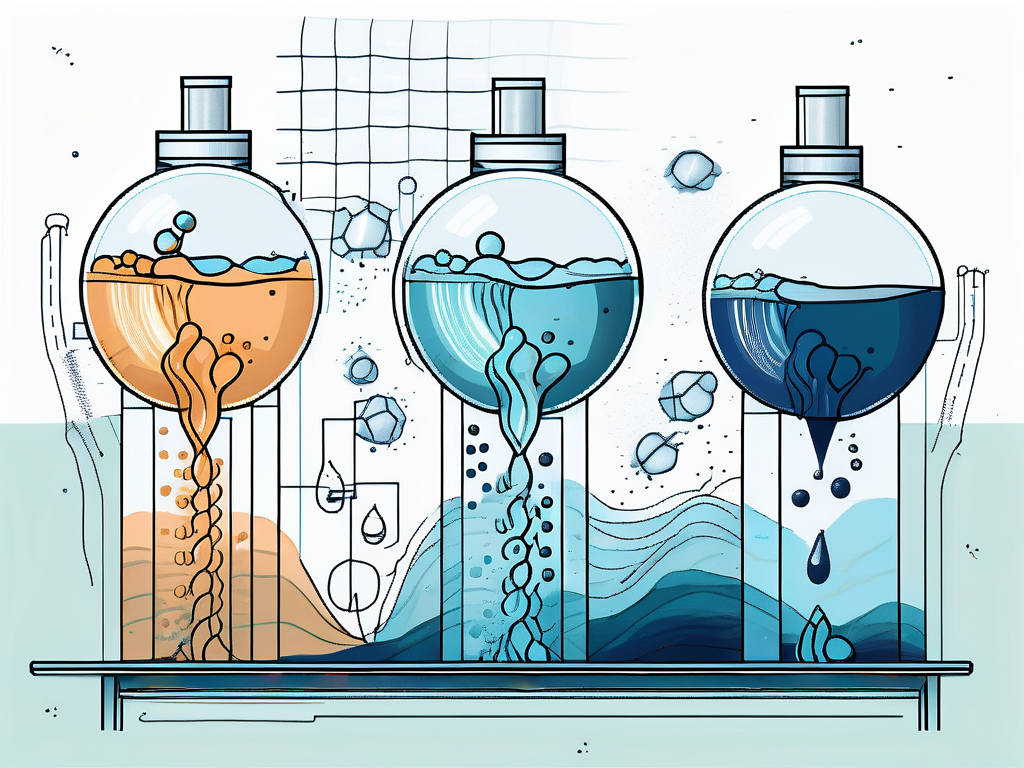
Primary Clarifier: Wastewater Treatment Explained
In the realm of wastewater treatment, the primary clarifier stands as a critical component in the process of purifying water. This article will delve into the intricate details of the primary clarifier, its function, design, and operation, as well as the role it plays in the broader context of wastewater treatment.
Wastewater treatment is a complex process involving various stages, each with its own unique set of equipment and procedures. The primary clarifier is one such piece of equipment, playing a pivotal role in the initial stages of treatment. Understanding the primary clarifier is crucial to comprehending the overall process of wastewater treatment.
Understanding Wastewater Treatment
Before delving into the specifics of the primary clarifier, it is important to understand the broader context of wastewater treatment. This process involves the removal of contaminants from wastewater, primarily from household sewage, but also from industrial and agricultural runoff. It's a critical process that ensures the safety and cleanliness of our water supplies.
The process of wastewater treatment is typically divided into three stages: primary, secondary, and tertiary treatment. Each stage has a specific purpose and uses different methods and equipment to achieve its goals. The primary clarifier is involved in the first of these stages.
The Stages of Wastewater Treatment
Primary treatment is the first stage of wastewater treatment and involves the removal of large, solid materials from the wastewater. This is achieved through processes such as screening and sedimentation, with the primary clarifier playing a key role in the latter.
Secondary treatment follows the primary stage and involves the removal of dissolved and suspended biological matter. This stage often uses microorganisms in a controlled environment to break down the organic matter. The final stage, tertiary treatment, removes any remaining inorganic compounds and substances, ensuring the water is safe for discharge or reuse.
Importance of Wastewater Treatment
Wastewater treatment is a crucial process in maintaining public health and environmental safety. By removing harmful contaminants from wastewater, the treatment process prevents these substances from entering our water supplies and ecosystems, where they could cause significant harm.
Furthermore, wastewater treatment allows for the reuse of water, a critical factor in areas suffering from water scarcity. The treated water can be used for irrigation, industrial processes, and even direct reuse in households, reducing the demand on freshwater sources.
The Role of the Primary Clarifier
The primary clarifier, also known as a sedimentation tank, plays a crucial role in the primary treatment stage of wastewater treatment. Its main function is to remove solid particles from the wastewater through the process of sedimentation.

As wastewater enters the primary clarifier, it is slowed down to allow solid particles to settle at the bottom of the tank. These settled solids, known as sludge, are then removed from the tank, while the clarified water moves on to the next stage of treatment.
Design and Operation of the Primary Clarifier
The design of the primary clarifier is crucial to its operation. The tank is typically large and rectangular or circular in shape, allowing for the slow, unimpeded flow of water. The tank's size and shape are designed to maximize the settling of solid particles.
The operation of the primary clarifier involves several steps. First, the wastewater is introduced into the tank. As the water flows slowly through the tank, solid particles begin to settle at the bottom. These settled solids are then removed, typically by a mechanical scraper, while the clarified water is drawn off from the top of the tank.
Factors Influencing the Efficiency of the Primary Clarifier
Several factors can influence the efficiency of the primary clarifier. These include the flow rate of the wastewater, the size and density of the solid particles, and the temperature of the water. For example, a higher flow rate can prevent solid particles from settling, while colder temperatures can slow down the sedimentation process.
It's also important to note that the primary clarifier is not capable of removing all solid particles from the wastewater. Some particles are too small or light to settle in the tank, while others may be dissolved in the water. These particles will need to be removed in the subsequent stages of treatment.
Challenges and Solutions in Primary Clarification
Despite its critical role in wastewater treatment, the primary clarifier is not without its challenges. One of the main issues is the handling and disposal of the sludge removed from the tank. This sludge is often high in organic matter and can be difficult to dispose of safely.

Another challenge is the potential for the clarifier to become overloaded. If the flow rate of the wastewater is too high, or if there is a high concentration of solid particles, the clarifier may not be able to effectively remove all the solids. This can lead to poor treatment performance and potential environmental issues.
Sludge Handling and Disposal
One solution to the challenge of sludge handling and disposal is the use of sludge digesters. These devices use bacteria to break down the organic matter in the sludge, reducing its volume and making it safer for disposal. The digested sludge can then be used as a soil conditioner, further reducing the environmental impact of disposal.
Another solution is the use of sludge dewatering techniques. These methods, which include centrifugation and filtration, remove water from the sludge, reducing its volume and making it easier to handle and dispose of.
Overcoming Overloading Issues
To overcome the issue of overloading, it's important to carefully monitor and control the flow rate of the wastewater entering the primary clarifier. This can be achieved through the use of flow control devices and by adjusting the operation of the clarifier as needed.
Furthermore, pretreatment processes, such as screening and grit removal, can help to reduce the concentration of solid particles in the wastewater before it enters the primary clarifier. This can help to prevent overloading and improve the overall efficiency of the treatment process.
Conclusion
The primary clarifier is a vital component in the wastewater treatment process. By removing solid particles from the wastewater, it helps to protect our water supplies and the environment from harmful contaminants. Despite the challenges it faces, with careful design and operation, the primary clarifier can effectively perform its role in the treatment process.
Understanding the primary clarifier and its role in wastewater treatment is crucial for anyone involved in the design, operation, or maintenance of wastewater treatment facilities. By gaining a comprehensive understanding of this equipment and its operation, we can ensure the effective and efficient treatment of wastewater, protecting our water supplies and the environment for future generations.



